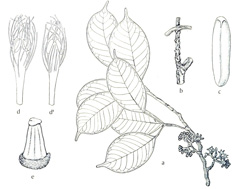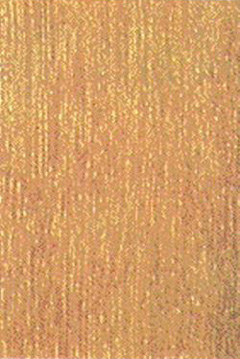 |
|
https://edibleplants.org/ |
 |
| https://edibleplants.org/ |
Translate this page:
Summary
Cantleya corniculata is a tropical tree found in Asia that grows up to 40 m tall and has a high, dense crown and straight bole. The fruit is edible though unattractive and of poor quality. The wood is brownish-yellow in colour and has a strong and aromatic scent. It is very heavy and very durable. Found In: Asia, Indonesia, Malaysia, SE Asia. Other Names: bedaru, samala, bedaru, garu buwaja, tusam
Physical Characteristics

 Cantleya corniculata is an evergreen Tree growing to 30 m (98ft) by 25 m (82ft) at a fast rate.
Cantleya corniculata is an evergreen Tree growing to 30 m (98ft) by 25 m (82ft) at a fast rate.
See above for USDA hardiness. It is hardy to UK zone 10.
Suitable for: light (sandy), medium (loamy) and heavy (clay) soils. Suitable pH: mildly acid, neutral and basic (mildly alkaline) soils and can grow in very acid soils.
It cannot grow in the shade. It prefers moist or wet soil.
UK Hardiness Map
US Hardiness Map
Synonyms
Cantleya johorica Ridl. Platea corniculata Becc. Stemonurus corniculatus (Becc.) Ridl. Urandra corni
Plant Habitats
Edible Uses
Edible Parts: Fruit
Edible Uses:
Fruit[ 451 ]. Said to be of a rather poor quality[ 451 ].
References More on Edible Uses
Medicinal Uses
Plants For A Future can not take any responsibility for any adverse effects from the use of plants. Always seek advice from a professional before using a plant medicinally.
None known
References More on Medicinal Uses
The Bookshop: Edible Plant Books
Our Latest books on Perennial Plants For Food Forests and Permaculture Gardens in paperback or digital formats.

Edible Tropical Plants
Food Forest Plants for Hotter Conditions: 250+ Plants For Tropical Food Forests & Permaculture Gardens.
More

Edible Temperate Plants
Plants for Your Food Forest: 500 Plants for Temperate Food Forests & Permaculture Gardens.
More

More Books
PFAF have eight books available in paperback and digital formats. Browse the shop for more information.
Shop Now
Other Uses
Furniture Wood
Other uses rating: High (4/5). The tree produces a highly valued timber that is much sought after and commonly exported[451].
Due to the heavy exploitation of this tree for its timber, it has been classified as 'Vulnerable' in the IUCN Red List of Threatened Species[338]. The brownish-yellow wood has a strong, aromatic scent. It is close-grained, hard, very heavy, does not split and is very durable in the ground[ 46 , 451 ]. Because of its fragrance, it is sometimes used as a substitute for sandalwood (Santalum spp.)[ 451 ]. It is used for heavy outdoor work, house and ship building, bridges, flag poles etc[ 46 , 451 ]. However, because it is prone to shrink and warp, it is only suitable for furniture or turnery if it has been fully seasoned[ 451 ].
Special Uses
Scented Plants
References More on Other Uses
Cultivation details
A plant of the moist, lowland tropics.
References Carbon Farming Information and Carbon Sequestration Information
Temperature Converter
Type a value in the Celsius field to convert the value to Fahrenheit:
Fahrenheit:
The PFAF Bookshop
Plants For A Future have a number of books available in paperback and digital form. Book titles include Edible Plants, Edible Perennials, Edible Trees,Edible Shrubs, Woodland Gardening, and Temperate Food Forest Plants. Our new book is Food Forest Plants For Hotter Conditions (Tropical and Sub-Tropical).
Shop Now
Plant Propagation
Seed
Other Names
If available other names are mentioned here
Cantleya corniculata or Daru. Other Names: bedaru, samala, bedaru, garu buwaja, tusam
Native Range
TROPICAL ASIA: Brunei Darussalam, Indonesia, Malaysia, Singapore
Weed Potential
Right plant wrong place. We are currently updating this section.
Please note that a plant may be invasive in one area but may not in your area so it's worth checking.
None Known
Conservation Status
IUCN Red List of Threatened Plants Status : Status: Vulnerable A1cd

Growth: S = slow M = medium F = fast. Soil: L = light (sandy) M = medium H = heavy (clay). pH: A = acid N = neutral B = basic (alkaline). Shade: F = full shade S = semi-shade N = no shade. Moisture: D = dry M = Moist We = wet Wa = water.
Now available:
Food Forest Plants for Mediterranean Conditions
350+ Perennial Plants For Mediterranean and Drier Food Forests and Permaculture Gardens.
[Paperback and eBook]
This is the third in Plants For A Future's series of plant guides for food forests tailored to
specific climate zones. Following volumes on temperate and tropical ecosystems, this book focuses
on species suited to Mediterranean conditions—regions with hot, dry summers and cool, wet winters,
often facing the added challenge of climate change.
Read More
Expert comment
Author
(Becc.) R.A.Howard
Botanical References
Links / References
For a list of references used on this page please go here
A special thanks to Ken Fern for some of the information used on this page.
Readers comment
| Add a comment |
|
If you have important information about this plant that may help other users please add a comment or link below. Only comments or links that are felt to be directly relevant to a plant will be included. If you think a comment/link or information contained on this page is inaccurate or misleading we would welcome your feedback at [email protected]. If you have questions about a plant please use the Forum on this website as we do not have the resources to answer questions ourselves.
* Please note: the comments by website users are not necessarily those held by PFAF and may give misleading or inaccurate information.
To leave a comment please Register or login here All comments need to be approved so will not appear immediately.
|
Subject : Cantleya corniculata
|
|
|
|